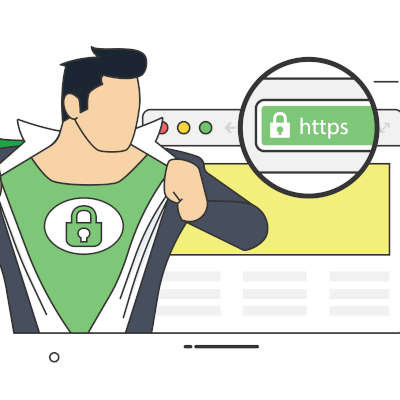With so many companies having to deal with security problems coming in from the Internet, they may think that securing against an attack coming in from the outside is where all their attention should go. This can be an oversight that could have dire consequences for your business. This month, we tell you why you need a security strategy that protects your data and infrastructure from all manners of threats—inside or outside your network.
Telesys Voice and Data Blog
Not everyone understands the ways that businesses can leverage artificial intelligence, among the most popular of emerging technologies, to improve the way they do business. This is because there is fundamental confusion about what exactly AI is capable of. This month, we thought we would take a brief look at AI and how it can be used by even the smallest business to build more efficient operations.
Privacy is a sensitive subject nowadays, especially online. Regardless of the browser you have elected to use, properly using it will have a large impact. Let’s review a few ways that you and your team can help secure your business and its resources and go over these settings.
Making solid business decisions can sometimes be confusing. Not that you try to make anything other than good decisions, but a lot of business is, and has always been, trial and error; and, you may know this from experience, error happens to be a big part of it. Today, we thought we would discuss what goes into good technology decisions and how many times it comes down to the results.
In a recent post, we talked about the various image formats you should use when sharing images over email or online. The goal is to generate an image (or images) that are the smallest file size possible to make them easy to share and quick to download, without reducing the overall quality of the image.
As vaccines are showing promising results, we finally seem to see a light at the end of the COVID-19 tunnel. While it is still early to “look back on” the pandemic (after all, we are far from out of the woods), it makes sense to look to the future and consider how the lessons we’ve learned will continue to impact us—and this is perhaps nowhere truer than in the workplace.
Know it or not, your business takes in and creates a lot of data. Most of this data, like most items and information, isn’t worth much. Some of it, however, is crucial to your business’ ability to operate. If a situation comes along where you are faced with the prospect of losing your data, it will be much better to have a backup plan in place than not.
Communication is key to any good relationship, and this is even more true when that relationship is based in a business setting. This is the case whether you’re referring to the correspondence between an organization and its clientele, or the collaboration between employees as they complete their tasks. Let’s consider four things small businesses can and should do to create a communications strategy that encourages their success.
Businesses use a vast array of technology for several different purposes. Some businesses use a muted strategy, while others depend on a technology-centered strategy to completely run their business’ operations. With businesses really trying to maximize their profitability, many turn to the automated tools offered by technology to cut their human resources costs. This month we thought we’d discuss some of the basic technology that even the smallest businesses are using to get ahead in a time when it is easy to fall behind.
Cloud computing has been one of the most utilized tools for business in 2020. The COVID-19 pandemic has made it crucial for businesses to give remote access to tools and one effective way to make that happen was to look to the cloud. This has expanded an already booming market and presents businesses of all sizes with the opportunity to get the computing they need without huge upfront costs. Today, we’ll take a look at the cloud computing market and how you can leverage hosted computing solutions to improve your business.
Nobody intends to lose their smartphone. For some of us, our mobile device is glued to our hands for a good portion of the day—it’s hard to imagine simply leaving it somewhere, right?
Mistakes happen. It doesn’t take more than a few minutes to set your smartphone up so you can track it down easily if you lose it.
The year 2020 hasn’t been kind to many people. Between the COVID-19 pandemic, the resulting economic downturn, and the people looking to take advantage of these negative circumstances, it’s hard to know what to do to keep from becoming a victim. What helps is to take a thorough examination of where your business’ weak points are. This month, we thought we would take a look at cybersecurity by examining the perpetrators and their methods.
It doesn’t take a lot of consideration to know that your business is extremely limited without its data. There are dozens of antivirus solutions on the market for this very reason. One of the best ways to protect your digital assets is to back up data using a reliable backup platform. In today’s blog, we’ll go over a few basic considerations to make if you want a data backup that you can trust.
Your business relies on technology to keep operations moving, but your technology relies on you to stay functional. While many small businesses will choose to forsake an in-house IT department in favor of a self-service model, this is a costly maintenance practice that could put your IT in jeopardy. Instead, your organization should invest in our managed IT services, which have the possibility to show your business an entirely new way of managing technology assets.
Smartphones are everywhere. You go to the supermarket, people are on their phones, you go to the gym, people are on their phones. Go into the office? People are constantly on their phones. All that phone use cannot be in the best interest to organizational profitability. The question becomes, do smartphones help or hurt business? Let’s get into it.
Nowadays, social media companies have a lot of power and influence, which is part of the reason that so many of today’s largest businesses have adopted social media as a critical promotional tool. With the average person spending about two hours and 24 minutes on social media and messaging applications per day, this makes social media a clear opportunity for any sized business to embrace. Let’s consider a few ways this can be accomplished for these different businesses.
Businesses have many problems they need to solve. With technology, the process typically starts with identifying a problem, researching solutions, and finding one that will successfully work to solve the problem. Traditionally, when dealing with technology, a company would procure the hardware and hire technicians to implement the solution and deploy the services needed. If they had to borrow money to do it, they would because the profits would presumably be more than the payments even with banks tacking on interest.
There are times when people take their technology for granted. One of the most under-the-radar, yet still critical parts of a business’ technology infrastructure is the networking equipment. By this we mean the hardware that connects your business to the Internet and to your network. We are talking cables, switches, and routers. This month, we will take a look at typical office networking found in 2020 and the technologies that are primed to replace them.
For most businesses, inventory is a big deal. That’s why it is so surprising that many of the same businesses that depend on their inventory and supply chain fail to properly inventory their technology. This month, we’ll discuss the importance of keeping a technology inventory.
When there’s a computer problem, downtime ensues, and productivity suffers. It’s really that simple. Your staff isn’t running on all cylinders because they are always having to restart, the software they need isn’t working properly, or they simply forgot their password.
Mobile? Grab this Article!
Tag Cloud




















